So many Second World War ships and planes were sunk around Savo Island in months of conflict between the US and Japan, that this stretch of the Pacific Ocean earned the new name Iron Bottom Sound.
Decades later, the wrecks remain and so do their contents and cargos, including toxic chemicals from ammunition, explosives, and fuel. As they corrode and leak in the deep waters off this part of the Solomon Islands archipelago, chemicals such as heavy metals and hydrocarbons leach into the marine environment. These possess possible risks to the surrounding ecosystems and perhaps even human health.
Iron Bottom Sound is just one example of a growing global problem. From Hawaii to the Baltic Sea, researchers are working against the clock to understand the risk to the marine environment posed by these legacy munitions – and what should be done about them.
Many were put into the ocean deliberately, to dispose of unused stocks at the end of conflicts. “They have been dumping munitions in the ocean for a long time,” says Margo Edwards, director of the Applied Research Laboratory at the University of Hawaii, who has studied the problem.
There these weapons have largely lain undisturbed for almost a century, but fishing and other marine activities such as offshore wind power are now increasingly intruding on the sites. And as the munitions corrode, the risk of environmental contamination grows year by year. “It’s kind of our modern life expanding into a decision that was made back in the 1940s, and even prior to that, that’s causing this conflict,” says Edwards.
Bracing for disaster
In some cases, leftover munitions are well known landmarks. The US wreck SS Richard Montgomery, for example, has lain in shallow water in the Thames estuary about 50 miles east of London since it ran aground in a storm in 1944. With its masts clearly visible above the often choppy water, the stricken vessel is laden with an estimated 1,400 tonnes of unexploded ordnance. An assessment in 1970 found that if this blew up, it would trigger a tsunami large enough to engulf the nearby town of Sheerness.
But in many cases, the scale and exact location of the underwater hazards remain unknown. Records have been lost or were never made in the first place. Anxious sailors tasked with disposing of the dangerous leftovers often tipped them into the sea as soon as possible.
For years, the problem has been out of sight and out of mind. But, some experts say, that is no longer the right approach. The metal canisters and boxes that hold many of the dumped explosives have been steadily corroding and are now at increased risk of leakage. If significant numbers were to give way simultaneously, or in a short space of time, that could cause a serious pollution event. At the very least, researchers say, we need better surveys and monitoring so that the level of risk can be properly assessed.
“All the mechanisms are in place for a huge environmental disaster,” says Jacek Beldowski, a geochemist working with ocean-dumped munitions at the Institute of Oceanology, Polish Academy of Sciences. “Everything depends on the rate of corrosion, and will it be simultaneous or not?”
Assessing the environmental risk
The environmental threat from unexploded undersea munitions comes in two forms.
The first is discarded chemical weapons, including mustard agents, used to generate the kind of poison gas that caused terror in the trenches of the First World War. These agents, and breakdown products such as arsenic, are toxic to sea life and accumulate in the larvae of fish and shellfish.
The second comes from ingredients of conventional explosives, including TNT. These are known to cause cancer and so scientists cannot set a “safe” level of exposure.
“Both are persistent point sources of contamination at the bottom of the sea and they’re releasing toxic constituents,” says Beldowski, who has seen the situation firsthand in the Baltic Sea.
“We’ve got something like 40,000 tonnes of chemical munitions in the Baltic, and maybe half a million tonnes of conventional munitions,” he says. “It’s easier to identify chemical munition if it is corroded because you see the bursting charge, which was in the middle to spray the warfare agents around.”
There is no question that toxic chemicals are being released, but that does not always indicate a serious threat to the environment. It all depends on the concentration and how it affects marine life. That is something that Edmund Maser, a toxicologist at Kiel University in Germany, is trying to find out.
Maser has run experiments in the Baltic to expose mussels to corroding mines placed there by the British navy in the 1940s, and to chunks of TNT that have fallen out of them. After three months they found the mussels next to the chunks had absorbed up to 400 times more of the TNT and its derivatives than those placed next to the more intact mines.
Maser says this shows the risk of environmental contamination will rise sharply as munitions corrode.
“When we wait too long, all these bombs, mines and torpedo heads will lose their protecting metal shell. That will expose a bigger surface area of the explosive, and then we will have a higher dissolution rate into the environment.”
Fishing is banned from known munition sites in the Baltic. But work in Maser’s lab has shown that mussels grown elsewhere, including in the North Sea, have started to show signs of similar contamination. Mussels collected in the 1980s did not contain the toxins. “The first signs of munition chemicals appeared in 2000. And starting in 2012, we had clear signs of these chemicals appearing,” says Maser. The concentrations are still low, he stresses, but they will continue to increase.
Action is needed now, Maser says, before the situation gets worse. “We should now start remediation. To prevent further corrosion and to prevent a further contamination of the marine environment.”
Who should fix the problem?
Making the munitions safe or removing them from the sea is a challenging task. Disturbing sites risks accidents and further disintegration of metal casings. Controlled explosions have been carried out in the past, but these would simply spread the contamination over a wider area.
There’s also the question of who is responsible. David Alexander, professor of emergency planning and management at University College London, has studied the risks posed by the SS Richard Montgomery in the Thames. He points out that efforts to make the wreck safer have been complicated because it’s an American-owned ship in British waters.
“The US government offered to do something about it [in 1948 and 1967], and the British government said, ‘no thank you,’” he says.
The responsibility issue is particularly acute for Pacific islanders, including those on the Solomon Islands, who have effectively inherited someone else’s problem. Alongside international NGOs, the US and Japan have worked to remove munitions from places such as Palau, points out Linsey Cottrell, environment policy officer with the Conflict and Environment Observatory.
Much of this work has so far focused on munitions left on land, as they pose a greater threat to local people. But that work will have to spread offshore, Cottrell says.
“Palau and the Solomon Islands have got such a high dependency on tourism and diving. It’s kind of critical to deal with it,” she says.
Next year will see the 80th anniversary of the war that gave Iron Bottom Sound its name. The problems created then still remain to be solved.
David Adam is a freelance journalist based near London. This article appears courtesy of Dialogue Earth and may be found in its original form here.
The opinions expressed herein are the author's and not necessarily those of The Maritime Executive.
As part of its ongoing effort to perfect a new class of weapon - the precision-guided antiship bomb - the U.S. Air Force Research Laboratory has sunk another merchant vessel in the Gulf of Mexico.
For years, a team at AFRL has been working with the U.S. Navy on an anti-ship guidance system that works with the Pentagon's standard smart bomb tail kit, the Joint Direct Attack Munition (JDAM) - among the most common and affordable guided weapons in the U.S. inventory. Their objective was to create a $40,000 bomb that rivals the performance of a $5 million Mk 48 heavyweight torpedo.
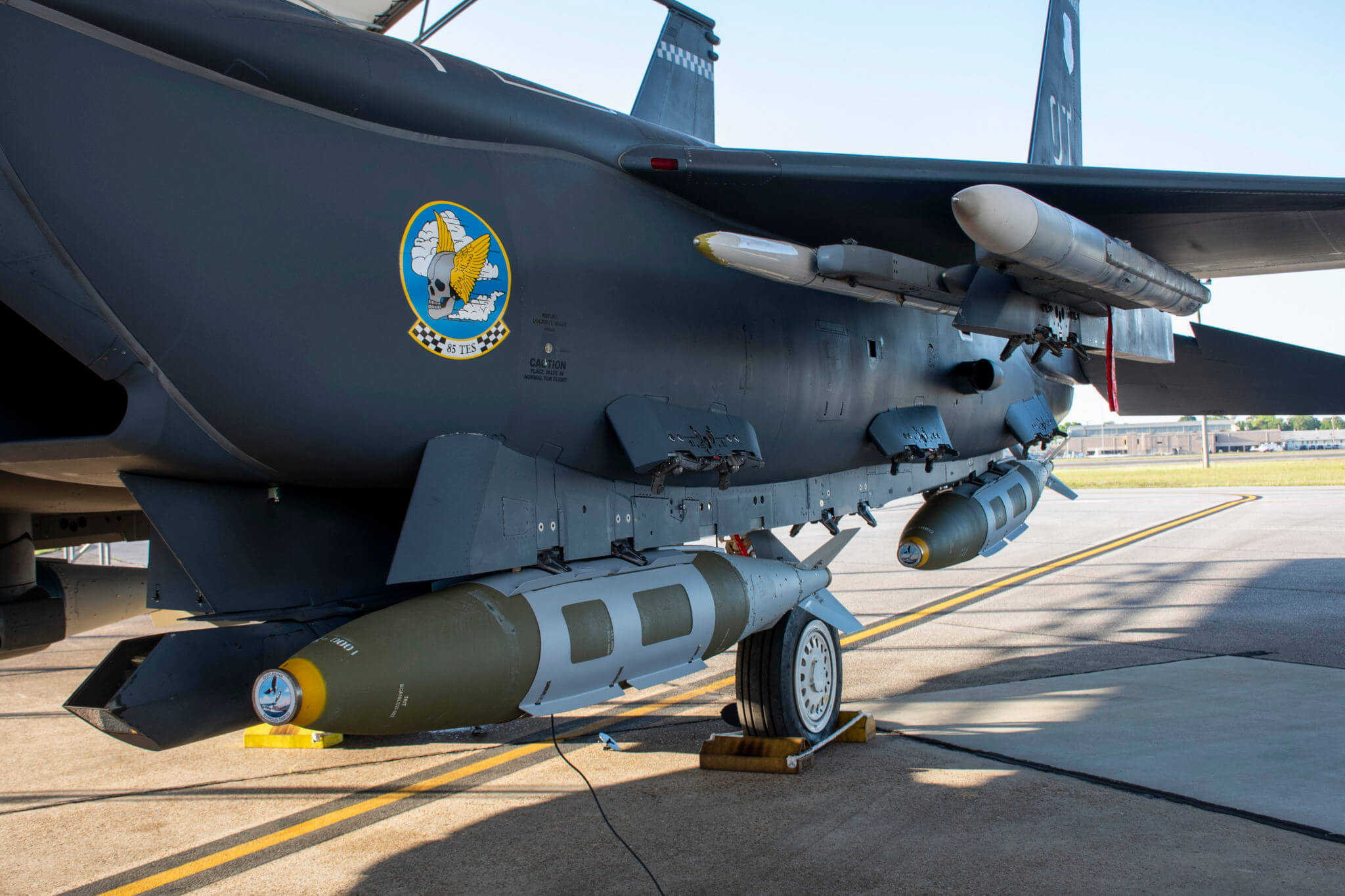 Quicksink-equipped 2,000-pound bombs on an F-15E Strike Eagle, 2022 (USAF / AFRL)
Quicksink-equipped 2,000-pound bombs on an F-15E Strike Eagle, 2022 (USAF / AFRL)
“A Navy submarine has the ability to launch and destroy a ship with a single torpedo at any time, but the Quicksink aims to develop a low-cost method of achieving torpedo-like kills from the air at a much higher rate and over a much larger area,” explained AFRL program manager Kirk Herzog in 2022.
In the first round of testing in 2022, the lab attached this "Quicksink" guidance kit to a 2,000-pound bomb, loaded it onto an F-15E Strike Eagle, and dropped it on a decommissioned merchant ship. The vessel broke in half, and the stern section slipped below in 20 seconds, followed by the bow 17 seconds later.
A second test was carried out on the decommissioned amphib USS Tarawa last month off the coast of Hawaii, as part of a sinking exercise for the Rim of the Pacific (RIMPAC) maneuvers. Detailed results have not been released, but the target ultimately sank after multiple hits from different munitions.
In July, AFRL tested Quicksink again - this time on a much different vessel, the small ro/ro Monarch Countess (IMO 7500736). A B-2 stealth bomber dropped the munition on the Countess off of Destin-Fort Walton Beach on Florida's Gulf Coast; no video of the test was released.
The Countess' sinking was carried out in partnership with Okaloosa County's artificial reef program, which redeploys older tonnage as an attraction for dive tourism and a habitat for fish. At a site depth of 180 feet, the wreckage will be accessible to recreational divers.
Monarch Countess was a 2,700 dwt ro/ro freighter built in 1977. Her previous name was Cap Canaille, and she once flew the French flag for CMA CGM.



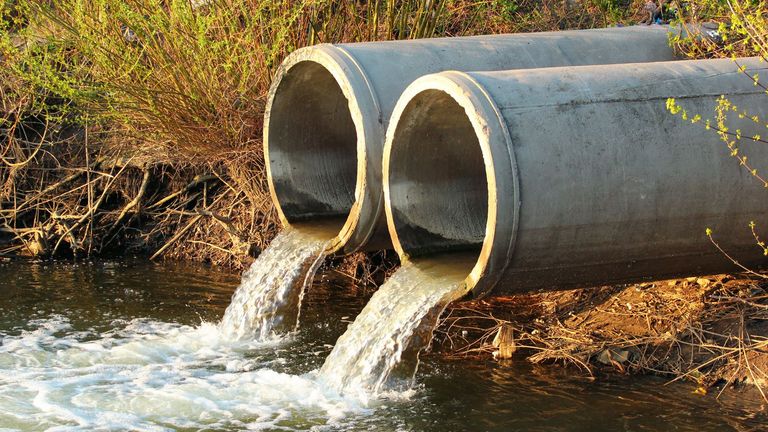





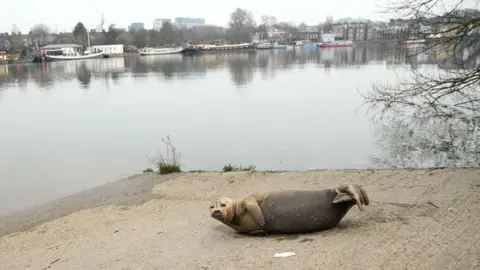
 ZSL
ZSL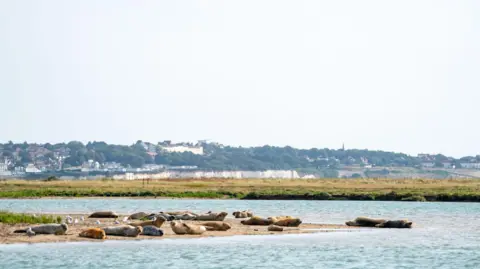 ZSL
ZSL

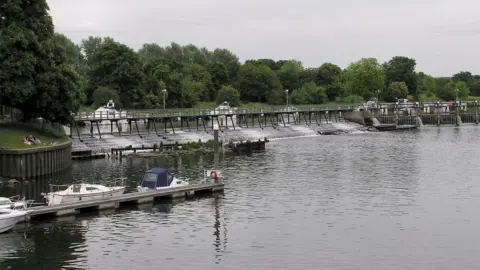







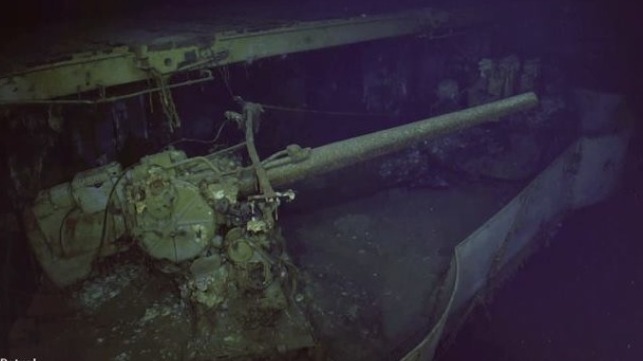
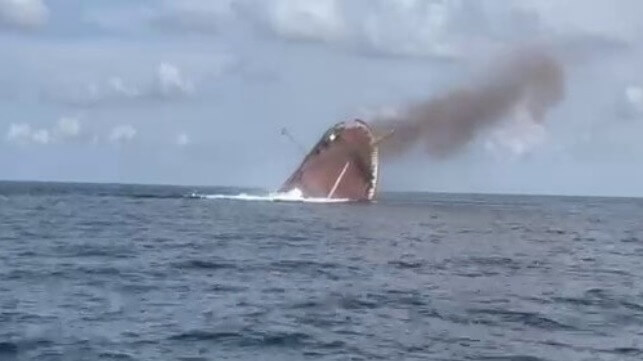
 Quicksink-equipped 2,000-pound bombs on an F-15E Strike Eagle, 2022 (USAF / AFRL)
Quicksink-equipped 2,000-pound bombs on an F-15E Strike Eagle, 2022 (USAF / AFRL)